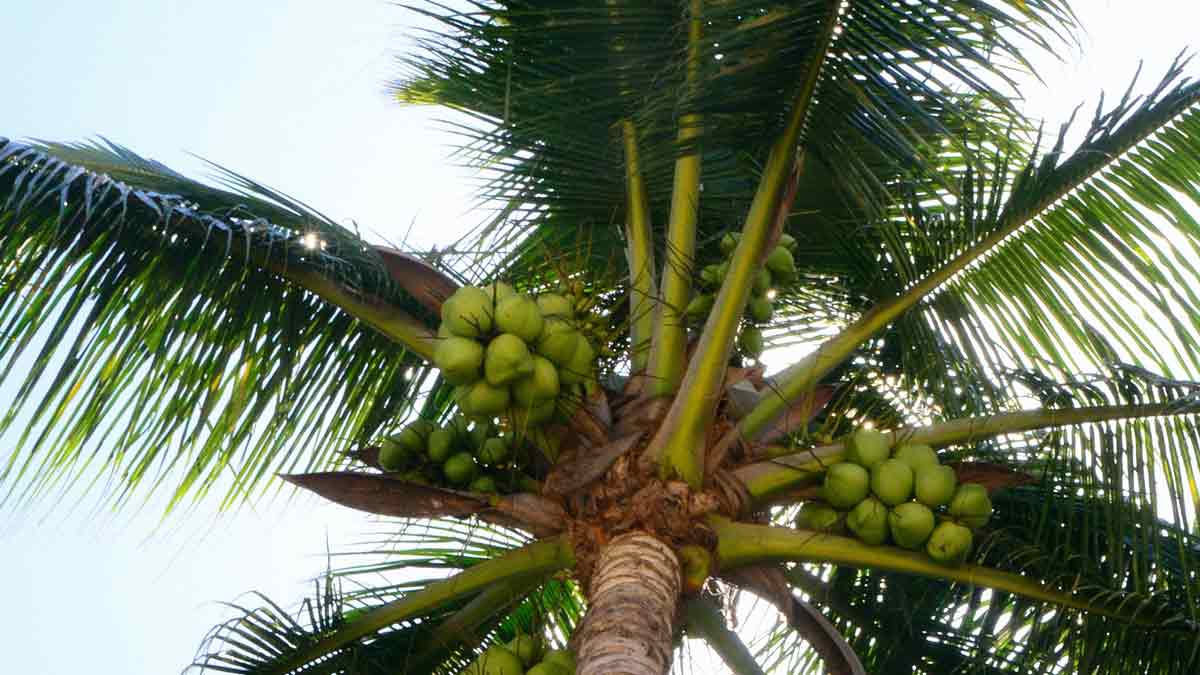
Sodium lauryl glucose carboxylate
- Derived from: coconut
- Pronunciation: (\ˈsō-dē-əm\ˈlȯr-əl \ˈglü-ˌkōs \car·box·yl·ate\)
- Type: Naturally-derived
What Is Sodium lauryl glucose carboxylate?
Sodium lauryl glucose carboxylate is a yellow liquid derived from coconut.[1] Coconuts grow on the cocos nucifera, or coconut palm tree, around the world in lowland tropical and subtropical areas where annual precipitation is low.[2,3] Widely cultivated, healthy coconut palms produce 50 nuts per year, and the tree can be used to produce everything from food and drink to fibers, building materials, and natural ingredients.[4,5]
What Does Sodium lauryl glucose carboxylate Do in Our products?
Sodium lauryl glucose carboxylate is a surfactant that allows water, oil and dirt to mix, allowing things to become clean. It is also a foam booster and conditioning agent.[6] It can be found in personal care products such as shampoo, body wash, facial cleanser, exfoliants, makeup remover, and other items.[7]
Why Puracy Uses Sodium lauryl glucose carboxylate
We use sodium lauryl glucose carboxylate as a biodegradable surfactant and cleanser. Whole Foods has deemed the ingredient acceptable in its body care quality standards.[9] Research shows the ingredient is typically not a strong skin irritant or sensitizer.[10,11,12]
How Sodium lauryl glucose carboxylate Is Made
Sodium lauryl glucose carboxylate is an alkyl polyglucoside made by reacting corn starch with a fatty alcohol to produce a highly biodegradable surfactant.[8]
Sources
[1] Universal Preserv-a-Chem, Inc.
[2] Pennsylvania State University
[3] Cosmeticsinfo.org
[4] University of Hawaii at Manoa College of Tropical Agriculture & Human Resources
[5] U.S. National Plant Germplasm System
[6] SAAPedia
[7] Environmental Working Group
[8] Sekhon, B., “Surfactants: Pharmaceutical and Medicinal Aspects.” Journal of Pharmaceutical Technology, Research and Management. Vol. 1; May 2013 pp. 43-68
[9] Whole Foods Market
[10] Mehling, A., et al., “Comparative studies on the irritation potential of surfactants” Food and Chemical Toxicology (2006), doi:10.1016/j.fct.2006.10.024
[11] Pantelic, I., ed. Alkyl Polyglucosides: From Natural-origin Surfactants to Prospective Delivery Systems. Woodhead Publishing, July 4, 2014; pp. 33
[12] Sekhon, B., “Surfactants: Pharmaceutical and Medicinal Aspects.” Journal of Pharmaceutical Technology, Research and Management. Vol. 1; May 2013 pp. 43-68


























